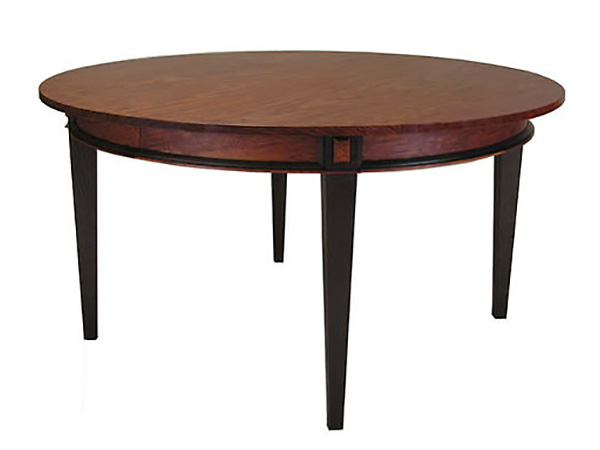
John Landis calls himself a cabinetmaker, but he means it in the old sense of the word when cabinetmakers primarily built furniture. He also says his pieces are influenced by Gothic design, but he also means that in the old sense of the word, i.e. the Gothic architecture of centuries ago.
There was, says John, a Gothic furniture movement in the 1900s, but his designs are more of an emulation of Gothic cathedrals and buildings. In that style, the buildings were massive structures on the outside, but light and airy on the inside. That’s what he tries to achieve with his furniture.
It’s no surprise, therefore, that John’s training is in architecture and that discipline figures strongly into the furniture he makes. His designs, therefore, are primarily functional and any decorative elements are understated. “I’m really not into art furniture,” says Jim, “I don’t like building furniture as a sculptural piece or art piece. Basically, I decide functionally what the piece is supposed to do.”
He uses a variety of joints in his tables including mortise and tenon, dovetails and notched fork joints. One of his favorite is a three-point miter joint, even though the joint itself isn’t visible. He says he really struggles with designing truly unique dining room tables because, as he puts it, there are only four or five ways to build one: trestle, pedestal, four-legged, etc. He really admires a designer out of Washington, Virginia named Peter Kramer because he seems to be able to create really innovative tables using the existing forms.
John himself has designed a table he calls a pierced lattice dining table, where the massive legs of the table are hollowed out through the middle and decorated with a lattice design. The trick for him was to design chairs that matched the table without repeating the same element in the legs of the chairs. “You don’t want to beat the client over the head,” says John. He wanted something more subtle, so he used the lattice design in the lumbar support of the chairs.
John tends to like the exotic woods, especially wenge. “I don’t like contrasting woods very much, but wenge and bubinga go together great and wenge and rosewood go great together too,” he says. They are a bit pricey, especially the bubinga, but it’s worth it in the long run. When you’re investing in a major piece like a dining room table, says John, it makes sense to buy wood that’s really going to be spectacular.
Right now John is struggling just to keep up. For some reason, the gallery where he shows his work was completely emptied in December by customers eager for his stuff. He’s also trying to keep up with his custom work while getting ready for the furniture show in Philadelphia.
– Bob Filipczak





